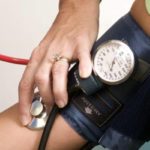1. A self-monitoring blood pressure (SMBP) program enhanced with smartphone patient engagement features was not associated with a significant difference in BP reduction, compared to a standard SMBP program.
Evidence Rating Level: 1 (Excellent)
For individuals with uncontrolled blood pressure (BP), guidelines from around the world recommend self-monitoring of BP (SMBP) as a component of management, paired with interventions that emphasize patient engagement or counselling. As a result, some programs have been initiated that build on SMBP by transmitting data from these devices to healthcare providers, to optimize pharmacotherapy and patient education. However, these are also associated with significant costs and transformation to healthcare record systems. Another strategy is enhanced SMBP, which transmits data from the BP machine to a patient’s smartphone, and allows the patient to receive reminders, data visualization, and recommendations, without further cost to the healthcare system. Because the efficacy of this is unclear, this randomized controlled trial aimed to compare the changes in systolic BP after 6 months amongst patients who received standard versus enhanced SBMP. This study was conducted across 23 health systems, with the population consisted of adults who self-reported a systolic BP greater than 145 mmHg at a clinic visit, had an interest in lowering their BP, and had a smartphone. 1050 patients were randomized to standard SMBP, and 1051 to enhanced SMBP. BP machines and instructions were mailed to all participants, and systolic BPs in clinic were compared at baseline and at 6 months follow-up. The study population had a mean (SD) age of 58 (13) years and the comfort level with the technology was reported as a 4.1 (1.1) out of 5. The results showed no difference in the mean change in systolic BP, with a mean difference of -10.6 (18) mmHg in the standard SMBP group and a difference of -10.8 (18) mmHg in the enhanced SMBP group (difference -0.19, 95% CI -1.83 to 1.44, p = 0.81). Other outcomes such as change in diastolic BP, proportion of individuals with systolic BP reduction > 10 mmHg, and proportion of individuals with BP controlled below 130/80 were not significantly different, whereas the proportion of individuals with BP controlled below 140/90 favoured the enhanced SMBP group (32% vs 29%, odds ratio 1.15, 95% CI 1.01-1.34, p = 0.03). Overall, this study demonstrated that there was no significant advantage to an enhanced SMBP program with device-initiated patient engagement tools, compared to a standard SMBP group.
Click to read the study in JAMA Internal Medicine
Image: PD
©2022 2 Minute Medicine, Inc. All rights reserved. No works may be reproduced without expressed written consent from 2 Minute Medicine, Inc. Inquire about licensing here. No article should be construed as medical advice and is not intended as such by the authors or by 2 Minute Medicine, Inc.


